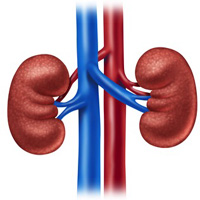Prevalence of urinary tract infection in children in the kingdom of Saudi Arabia

All claims expressed in this article are solely those of the authors and do not necessarily represent those of their affiliated organizations, or those of the publisher, the editors and the reviewers. Any product that may be evaluated in this article or claim that may be made by its manufacturer is not guaranteed or endorsed by the publisher.
Introduction: Urinary tract infection (UTI) is a common disorder in childhood. Early identification and appropriate antibiotic use are essential to avoid long-term sequels. The trial objective was to identify the prevalence of URI in children, and the risk factors.
Methods: This is an analytical cross-sectional study conducted in the Saudi Arabia, from April 4th 2020 till July 30th 2020. The sample was randomly selected from children who presented to the ministry of health tertiary hospitals. People answered a questionnaire of 10 items.
Results: 1083 people participated in the current trial. The prevalence of UTI was 25.8%. The mean age was 4.5-5 years. UTI was commoner in females than males. Urethritis was the main presenting complaint. Western region was the commonest identified area. Those with multivitamin deficiency had the highest prevalence.
Conclusion: UTI is not a very common problem for children in Saudi Arabia. Western region had the highest prevalence and the peak age ranged from 4.5 to 5 years. Additionally, nearly a sixth of children could develop severe/complicated UTI.
Subcommittee on Urinary Tract Infection, Steering Committee on Quality Improvement and Management, Roberts KB. Urinary tract infection: clinical practice guideline for the diagnosis and management of the initial UTI in febrile infants and children 2 to 24 months. Paediatrics. 2011; 128:595-610. DOI: https://doi.org/10.1542/peds.2011-1330
National Institute for Health and Clinical Excellence. Urinary Tract Infection in Children. London (UK): NICE; 2007.
Shaikh N, Morone NE, Bost JE, Farrell MH. Prevalence of urinary tract infection in childhood: a meta-analysis. Pediatr Infect Dis J. 2008; 27:302-308. DOI: https://doi.org/10.1097/INF.0b013e31815e4122
Foxman B. Urinary tract infection syndromes: occurrence, recurrence, bacteriology, risk factors, and disease burden. Infect Dis Clin North Am. 2014; 28:1-13. DOI: https://doi.org/10.1016/j.idc.2013.09.003
The total population in 2018. general authority for statistics (Saudi Arabia). Archived from the original on 2019-04-03.
Alanazi MQ, Al-Jeraisy MI, Salam M. Prevalence and predictors of antibiotic prescription errors in an emergency department, Central Saudi Arabia. Drug Healthc Patient Saf. 2015; 7:103-111. DOI: https://doi.org/10.2147/DHPS.S83770
Ghorashi Z, Ghorashi S, Soltani-Ahari H, Nezami N. Demographic features and antibiotic resistance among children hospitalized for urinary tract infection in northwest Iran. Infect Drug Resist. 2011; 4:171-176. DOI: https://doi.org/10.2147/IDR.S24171
Rabasa AI, Shattima D. Urinary tract infection in severely malnourished children at the University of Maiduguri Teaching Hospital. J Trop Pediatr. 2002; 48:359-361. DOI: https://doi.org/10.1093/tropej/48.6.359
Kala UK, Jacobs DW. Evaluation of urinary tract infection in malnourished black children. Ann Trop Paediatr. 1992; 12:75-81. DOI: https://doi.org/10.1080/02724936.1992.11747549
Shisana O, Rehle T, Simbayi LC, et al. South African National HIV Prevalence, Incidence and Behaviour Survey, 2014. Cape Town, South Africa: HSRC Press; 2014.
Alshamsan L, Al Harbi A, Fakeeh K. The value of renal ultrasound in children with a first episode of urinary tract infection. Ann Saudi Med. 2009; 29:46-49. DOI: https://doi.org/10.4103/0256-4947.51817
Shaw KN, Gorelick M, McGowan KL, et al. Prevalence of urinary tract infection in febrile young children in the emergency department. Pediatrics. 1998; 102:e16. DOI: https://doi.org/10.1542/peds.102.2.e16
Singh-Grewal D, Macdessi J, Craig J. Circumcision for the prevention of urinary tract infection in boys: a systematic review of randomised trials and observational studies. Arch Dis Child. 2005; 90:853. DOI: https://doi.org/10.1136/adc.2004.049353
Wald ER. Cystitis and pyelonephritis. In: Feigin and Cherry’s Cherry JD, Harrison G, Kaplan SL, et al. (Eds), Elsevier, Philadelphia 2018. p.395.
Shim YH, Lee JW, Lee SJ. The risk factors of recurrent urinary tract infection in infants with normal urinary systems. Pediatr Nephrol. 2009; 24:309. DOI: https://doi.org/10.1007/s00467-008-1001-0
Caksen H, Cesur Y, Uner A, et al. Urinary tract infection and antibiotic susceptibility in malnourished children. Int J Urol Nephrol. 2000; 32:245-247. DOI: https://doi.org/10.1023/A:1007104326689
Haynes RB, Sackett DL, Guyatt GH, Tugwell P. Clinical Epidemiology: How to Do Clinical Practice Research. 3rd ed. Philadelphia, PA: Lippincott Williams & Wilkins, 2006.
Abderrahman WA Water Management in ArRiyadh, International Journal of Water Resources Development 2006; 22:277-289. DOI: https://doi.org/10.1080/07900620600654785
Amer Kamel, et al., editors. The Water, Energy, and Food Security Nexus in the Arab Region. 1st ed., ser. 2017, 2367-4008, Springer International Publishing. DOI: https://doi.org/10.1007/978-3-319-48408-2
Health Indicators, Ministry of Health, Department of Statistics,2006.
Schmidt CO, Kohlmann, T. When to use the odds ratio or the relative risk? Int J Public Health. 2008; 53:165-7. DOI: https://doi.org/10.1007/s00038-008-7068-3
Garout WA, Kurdi HS, Shilli AH, and Kari JA. Urinary tract infection in children younger than 5 years. Saudi Med J. 2015; 36:497-501. DOI: https://doi.org/10.15537/smj.2015.4.10770
Al-Ibrahim AA, Girdharilal RD, Jalal MA, et al. Urinary tract infection and vesicoureteral reflux in Saudi children. Saudi J Kidney Dis Transpl. 2002; 13:24-28.
Al-Otaibi FE, Bukhari EE. Clinical and laboratory profiles of urinary tract infections caused by extended-spectrum beta-lactamase- producing Escherichia coli in a tertiary care center in central Saudi Arabia. Saudi Med J. 2013; 34:171-176.
Alanazi MQ. An evaluation of community-acquired urinary tract infection and appropriateness of treatment in an emergency department in Saudi Arabia. Ther Clin Risk Manag. 2018; 14:2363-2373. DOI: https://doi.org/10.2147/TCRM.S178855
Wald ER. Cystitis and pyelonephritis. In: Feigin RD, Cherry J, Demmler-Harrison GL, Kaplan SL, editors. Feigin and Cherry's text book of infectious diseases. 6th ed. Philadelphia (PA): Elsevier Saunders; 2009, pp. 554-569. DOI: https://doi.org/10.1016/B978-1-4160-4044-6.50050-9
Colgan R, Mozella WM. Diagnosis and treatment of acute pyelonephritis in women. Am Fam Physician. 2011; 84:519-526.
PAGEPress has chosen to apply the Creative Commons Attribution NonCommercial 4.0 International License (CC BY-NC 4.0) to all manuscripts to be published.


 https://doi.org/10.4081/aiua.2021.2.206
https://doi.org/10.4081/aiua.2021.2.206



